![]()
![]()
![]()
Use LEFT and RIGHT arrow keys to navigate between flashcards;
Use UP and DOWN arrow keys to flip the card;
H to show hint;
A reads text to speech;
16 Cards in this Set
- Front
- Back
|
types of congenital heart disease 8 common lesions that acccount for 80% |
VSD ventricular spetal defect PDA patent ductus arteriosus ASD atrial septal defect TOF tetralogy of fallot PS pulmonary stenosis CoA caorctation of the aorta AS aortic stenosis TGA transposition of the Great Arteries |
|
|
changes that occur at birth 7 changes |
pulmonary vascular resistance drops with increasing oxygen levels flow to tthe lungs increases drop in circulating prostaglandins ductus arteriosus begins to close foramen ovale begins to close physiological right ventricular hypertrophy |
|
|
functional differences in the heart - stroke volume |
sources of chemical energy forr myocardium- -adult myocardium=preference for fatty acids -foetal and neonate myocardium obligatory user of carbohydrates or glucose resting hr varies with age faster HR in babies and children - attribted to smaller size ventricular chambers (small stroke volume and high metabolic demands) SV increases with ag - corresponding drops in HR both fluctuate with activity practically - response to fluid therapy blunted (sv cannot increase greatly to improve cardiac output) |
|
|
shock stages what 3 |
compensated uncompensated irreversable |
|
|
uncompensated shock what happens |
insufficient oxygenation of tissues insufficient porvision of glucose to tissues failure of normal metabolism build up of lactic acida nd carbonic acid (acidosis) reduced cardiac output plaeteet aggregation is small blood vessels (bleeding) increased capillary premeabiity (fluid moves form capillaries into interstitual space) |
|
|
irreversable shock what happens |
damage to the renals and brain is such that even if dehydration (hypvolaemia) is corrected and fluid balance is restored, death will still take place oxygen free radicals are released and have caused irreversable maor organ damage |
|
|
temperature control function |
babies and infants=large surface area to weight rtio with minimal subcut fat. poorly developed shivering, sweating and vasoconstriction mechanisms. brown fat metabolism is required for non shiverig thermogenesis. more oxyegn is required for the metabolism of these brown fat stores |
|
|
why is dehydration a problem in children |
higher proportion of waster higher metabolic rate = greater propensity to dehydration greaterr surface area in proportion to weight greater proportionn of extracellular fluid neonates relative inaility to concentrate urine on dehydration |
|
|
fetal circulation quick describe each 3 |
FORAMEN OVALE -connects 2 atria -allows blood entering right heart to bypass pulmonary circuit DUCTUS ARTERIOSIS -between aorta and pulmonary artery DUCTUS VENOSUS -blood entering fetus from placenta |
|

what is this? |
patent ductus arteriosus |
|
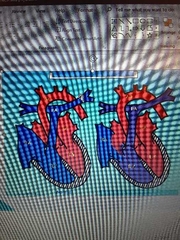
what is this? |
atrial septal defect |
|
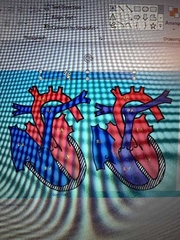
what is this? |
primum atrial septal defect |
|
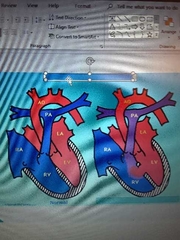
what is this? |
ventricular septal defect |
|
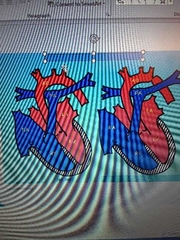
what is this? |
coarctation of the aorta |
|
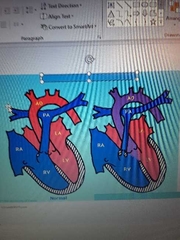
what is this? |
tetralogy of fallot |
|
|
explain fetal shunts and closure after birth |
ductus arteriosus constricts -allows all blood leaving the right ventricle to travel to lungs via pulmonary arteries formaen ovale closes -leaves small depression called fossa ovalis -isolates deoxygenated and oxygenated blood within heart IVC now carries only deoxygenated blood back to the heart ductus venous degenerates and becomes ligamenum venosum |

